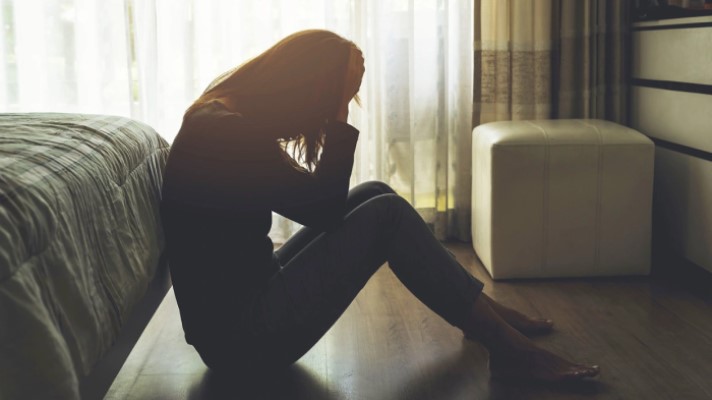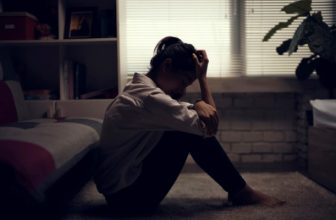
Depression is a mental health disorder characterized by persistent feelings of sadness, hopelessness, and a lack of interest in activities. It can also cause physical symptoms such as fatigue, changes in appetite and sleep patterns, and difficulty concentrating. Depression can have a significant impact on a person’s quality of life and can lead to difficulty functioning in daily activities. There are several different types of depression, each with its own unique set of symptoms and causes. It is a treatable condition, and with the help of a mental health professional, individuals can recover and lead fulfilling lives.
There are several different types of depression, including:
1. Major depressive disorder (MDD)
Major depressive disorder (MDD), also known as major depression or clinical depression, is a type of depression characterized by persistent feelings of sadness, hopelessness, and a loss of interest in activities. The symptoms of MDD are severe and long-lasting, and they can have a significant impact on a person’s ability to function in daily life.
Symptoms of MDD may include:
- Persistent feelings of sadness, emptiness, or hopelessness
- Loss of interest in activities that were once enjoyed
- Significant changes in appetite and weight (gain or loss)
- Difficulty sleeping or excessive sleeping
- Fatigue and decreased energy
- Difficulty concentrating or making decisions
- Thoughts of death or suicide
MDD can be diagnosed if an individual experience these symptoms for at least two weeks, and it causes significant distress or impairment in social, occupational, or other areas of life.
MDD is caused by a complex combination of factors, including genetic, environmental, and psychological factors. It is a treatable condition and a combination of therapy and medication is often recommended by mental health professionals.
2. Persistent Depressive Disorder (PDD)
Persistent depressive disorder (PDD), also known as dysthymia, is a type of depression characterized by persistent feelings of sadness, hopelessness, and a lack of interest in activities. Unlike major depression, the symptoms of PDD are less severe but last for at least two years.
Symptoms of PDD may include:
- Persistent feelings of sadness, emptiness, or hopelessness
- Loss of interest in activities that were once enjoyed
- Low self-esteem
- Difficulty sleeping or excessive sleeping
- Fatigue and decreased energy
- Difficulty concentrating or making decisions
- Feelings of worthlessness or guilt
PDD can be diagnosed if an individual experience these symptoms for at least two years, and it causes significant distress or impairment in social, occupational, or other areas of life.
Similar to MDD, PDD is caused by a complex combination of factors, including genetic, environmental, and psychological factors. Treatment for PDD typically involves a combination of therapy and medication, and it is important to seek help from a mental health professional.
3. Bipolar Disorder
Bipolar disorder, also known as manic-depressive illness, is a mental health disorder characterized by episodes of mania and depression. Mania is a state of elevated or irritable mood, energy, and activity levels, whereas depression is characterized by persistent feelings of sadness, hopelessness, and a lack of interest in activities.
Symptoms of Mania may include:
- Elevated or irritable mood
- Increased energy and activity levels
- Excessive optimism and self-confidence
- Rapid speech and racing thoughts
- Decreased need for sleep
- Impulsive or reckless behavior
- Grandiose ideas or delusions
Symptoms of Depression:
- Persistent feelings of sadness, hopelessness, or worthlessness
- Loss of interest in activities that were once enjoyed
- Significant changes in appetite and weight (gain or loss)
- Difficulty sleeping or excessive sleeping
- Fatigue and decreased energy
- Difficulty concentrating or making decisions
- Thoughts of death or suicide
Bipolar disorder is a type of mood disorder, and it’s typically diagnosed if an individual experiences manic or hypomanic episodes (a milder form of mania) that alternate with periods of depression.
The causes of bipolar disorder are not fully understood, but it is believed to be related to a combination of genetic and environmental factors. Treatment for bipolar disorder typically involves a combination of therapy, medication, and self-management techniques. It’s important to seek help from a mental health professional as this disorder can be severe and affect the quality of life of the person.
4. Seasonal Affective Disorder (SAD)
Seasonal affective disorder (SAD) is a type of depression that occurs during the fall and winter months, when there is less natural sunlight. This condition is characterized by symptoms similar to those of major depression, such as feelings of sadness, hopelessness, and a lack of interest in activities, as well as changes in sleep patterns, appetite, and energy levels.
Symptoms of SAD may include:
- Persistent feelings of sadness, hopelessness, or worthlessness
- Loss of interest in activities that were once enjoyed
- Significant changes in appetite and weight (gain or loss)
- Difficulty sleeping or excessive sleeping
- Fatigue and decreased energy
- Difficulty concentrating or making decisions
- Thoughts of death or suicide
The exact cause of SAD is not well understood, but it is thought to be related to changes in the levels of certain chemicals in the brain, such as serotonin and melatonin, that are affected by the reduced sunlight of the fall and winter months.
Treatment for SAD typically includes light therapy, which involves sitting in front of a light box that mimics natural sunlight for a certain period of time each day, as well as psychotherapy, medication and self-management techniques. Additionally, spending time outside during the day and doing exercise can help combat the symptoms of SAD.
5. Postpartum Depression (PPD)
Postpartum depression (PPD) is a type of depression that occurs after giving birth. It’s a common condition that affects approximately 10-20% of new mothers.
Symptoms of PPD may include:
- Persistent feelings of sadness, hopelessness, or worthlessness
- Loss of interest in activities that were once enjoyed
- Significant changes in appetite and weight (gain or loss)
- Difficulty sleeping or excessive sleeping
- Fatigue and decreased energy
- Difficulty concentrating or making decisions
- Thoughts of death or suicide
- Intense irritability and anger
- Difficulty bonding with the baby
- Fear of not being a good mother
- Feelings of guilt, shame or inadequacy
PPD can occur at any time within the first year after childbirth. It’s not fully understood what causes PPD, but it is believed to be related to a combination of physical, emotional, and hormonal changes that happen after childbirth.
Treatment for PPD typically includes therapy, medication, and support groups. It’s important for new mothers to seek help from a mental health professional if they suspect that they may have PPD. With the right treatment, most women with PPD can recover and successfully bond with their baby.
6. Psychotic Depression
Psychotic depression is a type of depression characterized by depression with symptoms of psychosis, such as hallucinations or delusions. It is a severe mental illness that requires prompt treatment.
Symptoms of Psychotic Depression may include:
- Persistent feelings of sadness, hopelessness, or worthlessness
- Loss of interest in activities that were once enjoyed
- Significant changes in appetite and weight (gain or loss)
- Difficulty sleeping or excessive sleeping
- Fatigue and decreased energy
- Difficulty concentrating or making decisions
- Thoughts of death or suicide
- Psychotic symptoms, such as hallucinations or delusions
Hallucinations are false perceptions that can involve any of the five senses, such as hearing voices or seeing things that are not there. Delusions are false beliefs that a person maintains despite evidence to the contrary, such as believing one is guilty of a crime or has a serious illness.
The exact cause of psychotic depression is not fully understood, but it is believed to be related to a combination of genetic, environmental, and psychological factors. Treatment for psychotic depression typically involves a combination of medication and therapy. Antidepressant and/or antipsychotic medications are used to help alleviate the symptoms of depression and psychosis. It’s important to seek help from a mental health professional as soon as possible, as untreated psychotic depression can lead to severe complications and even suicide.
7. Atypical Depression
Atypical depression, also known as non-melancholic depression, is a type of depression characterized by symptoms that do not fit the typical pattern of depression, such as increased appetite and sleep, and a strong reaction to rejection.
Symptoms of Atypical Depression may include:
- Persistent feelings of sadness, hopelessness, or worthlessness
- Loss of interest in activities that were once enjoyed
- Increased appetite and weight gain
- Increased sleep
- Difficulty concentrating or making decisions
- Feelings of heaviness in the limbs
- A strong reaction to rejection
- Irritability
Atypical depression is a subtype of major depressive disorder, and it’s typically diagnosed if an individual experiences these symptoms for at least two weeks, and it causes significant distress or impairment in social, occupational, or other areas of life.
The exact cause of atypical depression is not fully understood, but it is believed to be related to a combination of genetic, environmental, and psychological factors. Treatment for atypical depression typically involves a combination of therapy and medication. Antidepressant medication is usually prescribed, and therapy such as cognitive-behavioral therapy (CBT) can also be effective in treating this type of depression. It’s important to seek help from a mental health professional as soon as possible, as untreated atypical depression can lead to severe complications and even suicide.
8. Premenstrual Dysphoric Disorder (PMDD)
Premenstrual dysphoric disorder (PMDD) is a type of depression that occurs during the premenstrual phase of a woman’s menstrual cycle. It’s a severe form of premenstrual syndrome (PMS) and affects about 3-8% of women in their reproductive years.
Symptoms of PMDD may include:
- Persistent feelings of sadness, hopelessness, or worthlessness
- Loss of interest in activities that were once enjoyed
- Significant changes in appetite and weight (gain or loss)
- Difficulty sleeping or excessive sleeping
- Fatigue and decreased energy
- Difficulty concentrating or making decisions
- Thoughts of death or suicide
- Irritability, anger and tension
- Anxiety, depressed mood, and feelings of hopelessness
- Breast tenderness or swelling
- Abdominal bloating
- Headaches
The exact cause of PMDD is not fully understood, but it is believed to be related to a combination of genetic, environmental, and hormonal factors.
Treatment for PMDD typically involves a combination of therapy, medication, and self-management techniques. Antidepressant medication, such as selective serotonin reuptake inhibitors (SSRIs) are commonly prescribed, as well as hormone therapy or birth control pills to regulate hormone levels. Self-care measures such as regular exercise, a healthy diet, and stress management techniques can also be beneficial. It’s important to seek help from a mental health professional if you suspect you might have PMDD, as a proper diagnosis and treatment can help improve the quality of life.
9. Situational Depression
Situational depression, also known as adjustment disorder with depressed mood, is a type of depression that occurs in response to a specific event or stressor. It’s a short-term form of depression that can occur after a traumatic event, such as the loss of a loved one, a divorce, or a job loss.
Symptoms of Situational Depression may include:
- Persistent feelings of sadness, hopelessness, or worthlessness
- Loss of interest in activities that were once enjoyed
- Significant changes in appetite and weight (gain or loss)
- Difficulty sleeping or excessive sleeping
- Fatigue and decreased energy
- Difficulty concentrating or making decisions
- Thoughts of death or suicide
- Irritability and anger
- Anxiety
- Difficulty adjusting to the situation
Situational depression is caused by a specific event or stressor that triggers a depressive episode. It tends to be a short-term form of depression, and the symptoms will typically resolve within six months of the event or stressor.
Treatment for situational depression typically includes therapy, medication, and self-management techniques. Therapy such as cognitive-behavioral therapy (CBT) can help individuals to learn coping skills and ways to manage their emotions. Medications such as antidepressants may also be prescribed. It’s important to seek help from a mental health professional as soon as possible, as untreated situational depression can lead to severe complications and even suicide.
10. Treatment Resistant Depression (TRD)
Treatment-resistant depression (TRD) is a type of depression that does not respond to traditional forms of treatment, such as therapy and medication. It is a serious condition that can significantly impact an individual’s quality of life.
Symptoms of TRD may include:
- Persistent feelings of sadness, hopelessness, or worthlessness
- Loss of interest in activities that were once enjoyed
- Significant changes in appetite and weight (gain or loss)
- Difficulty sleeping or excessive sleeping
- Fatigue and decreased energy
- Difficulty concentrating or making decisions
- Thoughts of death or suicide
- Irritability and anger
- Anxiety
There are several reasons why a person may experience TRD, including:
- A lack of adherence to treatment
- A misdiagnosis of the condition
- A failure to try a sufficient number or combination of treatments
- A comorbidity (co-occurring condition) that is not being treated
- The presence of treatment-resistant subtype of depression
Treatment for TRD typically involves a combination of different strategies and therapies, such as:
- Augmenting antidepressant medication with other medications, such as lithium or thyroid hormone
- Electroconvulsive therapy (ECT)
- Transcranial magnetic stimulation (TMS)
- Vagal nerve stimulation (VNS)
- Ketamine infusions
It’s important to seek help from a mental health professional if you suspect that you may have TRD, as a proper diagnosis and treatment can help improve the quality of life. The treatment plan will be tailored to the individual’s specific needs and symptoms.
It’s important to note that depression can manifest differently from person to person and treatment should be tailored to specific needs.




